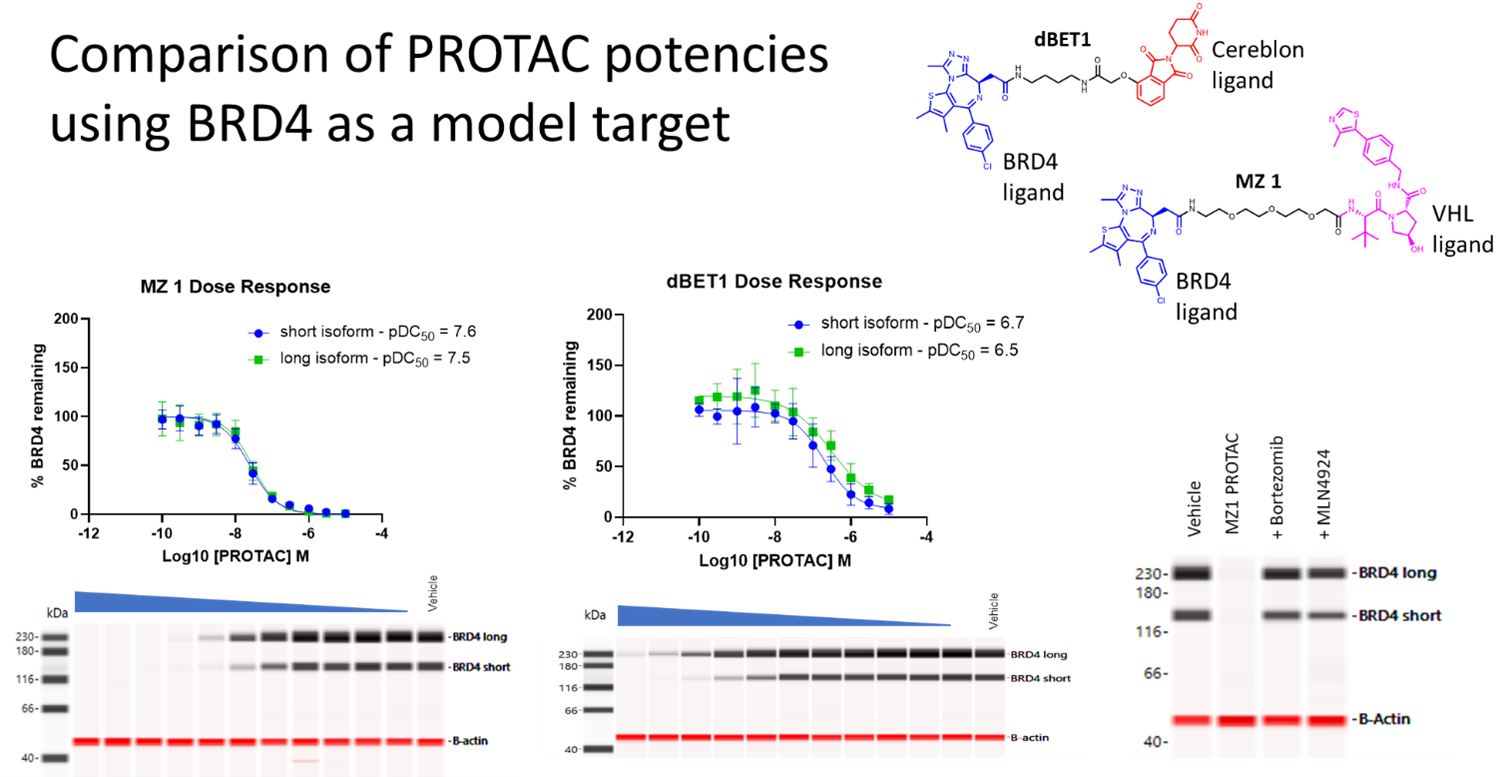PROTAC® Protein Degraders
PROTACs: Advanced Molecules for Targeted Protein Degradation
PROTACs (Proteolysis Targeting Chimeras) are innovative bifunctional molecules. They connect to ubiquitin ligase on one side and the targeted protein on the other. This mechanism leverages the cell’s endogenous machinery to eliminate, rather than merely inhibit, target proteins.
How Do PROTACs Work?
At its core, a PROTAC® molecule binds with a ubiquitin ligase on one end and with the targeted protein on the other. This unique design compels the ubiquitin-proteasome system—our body’s inherent waste disposal mechanism—to mark the protein for degradation. This contrasts with traditional strategies, such as using small molecule inhibitors or antibodies.
Benefits Over Traditional Small Molecule Drugs:
The potential advantages of PROTACs are considerable. They can target proteins even if they lack active sites. Moreover, they facilitate the removal of misfolded proteins from cells, a critical factor in neurodegenerative disease.
Redefining Treatment Prospects:
By leveraging the natural processes within our cells, PROTACs present promising possibilities in drug development. They hold the potential to address numerous disease-causing proteins that, until now, have evaded the reach of modern medicine.
A video depiction of dBET6, a PROTAC® targeted degrader, bound in the CRBN-BRD4 complex (6boy.pdb)
Protein Degradation Specialists at Sygnature Discovery
At Sygnature Discovery, we excel in aiding customers in PROTAC® molecule development. Our team boasts profound knowledge of the ubiquitin system and comprehensive protein degradation expertise. We specialise in essential assays for PROTAC® development, notably in surface plasmon resonance for analysing PROTAC® ternary complexes. Furthermore, our advanced tools, including HTRF and the Jess system (a capillary electrophoresis assay), enable precise assessment of target degradation, as showcased below.
The Jess System

Data generated at Sygnature Discovery by Catriona Scott
The data above compares potency, and DC50 values, for two PROTACs – MZ1 and dBET1. These PROTACs both target the protein BRD4, a well-described model target for early studies of PROTACs.
MZ1 recruits the VHL ubiquitin ligase, whereas dBET1 recruits Cereblon. Using our Jess capillary electrophoresis assay, we show that these two PROTACs can be clearly distinguished in terms of their potency.
As shown above, the Jess system can also be used to confirm the mechanism of action of degrader compounds, by use of compounds such as Bortezomib and MLN4924, inhibitors of the proteasome and the Cullin-RING family of ubiquitin ligases, respectively.
Comprehensive Expertise for PROTAC® Development at Sygnature Discovery
Leverage the expertise of our DMPK and pharmacokinetic specialists, pivotal for proteolysis targeting chimera degraders. They ensure insights into a PROTAC’s effects on the human body from the earliest stages.
Meanwhile, our computational and medicinal chemistry capabilities, our hit-finding expertise (HTS and fragment-based screening), and our broad expertise in various disease areas further strengthen our ability to help you with PROTAC® development.
Whether you need to conduct a PROTAC® PK/PD study in-house, want help identifying PROTAC® building blocks or just want to talk to us about protein degradation, get in touch with us via the form below or our contact page.
